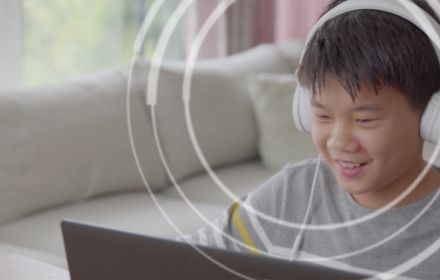Young people love the handy and innovative apps that proliferate online, but some are fake and far from what they appear to be — making it critical to know the difference. A fake app is designed to mimic an authentic one, replicating the look and features of the real thing so you will confidently download it to your mobile phone, tablet or computer. Once downloaded, an array of problems can erupt.
The fake app may contain malicious content such as malware, making your device perform unpredictably or strangely. Some fake apps are designed to steal personal information, while others aggressively display ads on devices. Unfortunately, it can be very difficult to identify fake apps and making a mistake can be costly. Here are nine ways to help you and your child avoid problems:
1. Check the name for clues. Make sure to check the app’s name. Look for misspelled words or a ‘logo’ that looks different from the real app.
2. Check the developer’s name as well. Research who has developed the app and any other apps they may have built. Information about an app's origin can help confirm that it’s real.
3. Explore online reviews. A popular authentic app will typically have numerous reviews. Look for them and read them to find negative comments or complaints about functionality or reliability. Negative reviews could indicate that an app contains dangerous malware.
4. How new is the app? If an app is recently published and suddenly in high demand, it could be a clue that it’s fake. Most popular apps have been on the market for a while and should contain the words “updated on” to show regular updates completed, instead of a single publication date that should raise suspicions.
5. Beware of discounts. Some apps offer discounts that are simply too good to be true. If you see an app promising excellent features at a surprisingly low price, ignore it and avoid trouble.
6. Look at the screenshots. If everything appears appropriate, turn to the online screenshots that apps stores use to illustrate an app's interface. Fake apps often use altered or poorly improvised screenshots, as well as words or taglines that are not used by the original developer.
7. Read the description. Watch out for confusing or incomplete information, poor grammar and misspelled words. These are useful clues that can reveal a fake app.
8. How many downloads? Popular apps should show that they have had millions of downloads, while a fake will usually have far lower download numbers. Take a look!
9. Permission granted? Authentic apps ask for permission to perform their functions, but some will ask for authorisation of functions unrelated to the app’s actual purpose. Before downloading, determine which specific functions it needs. If, for example, a flashlight or calorie-counting app asks permission to access your photo gallery or contact list, that’s a red flag to avoid the app.
Fake apps have become a powerful tool for cyber criminals looking to steal personal data or wreak havoc on your devices. They are here to stay, unfortunately, and their impact can be costly in terms of lost or stolen data that can be used to create everything from a stolen identity to fraudulent banking.
Explore more




